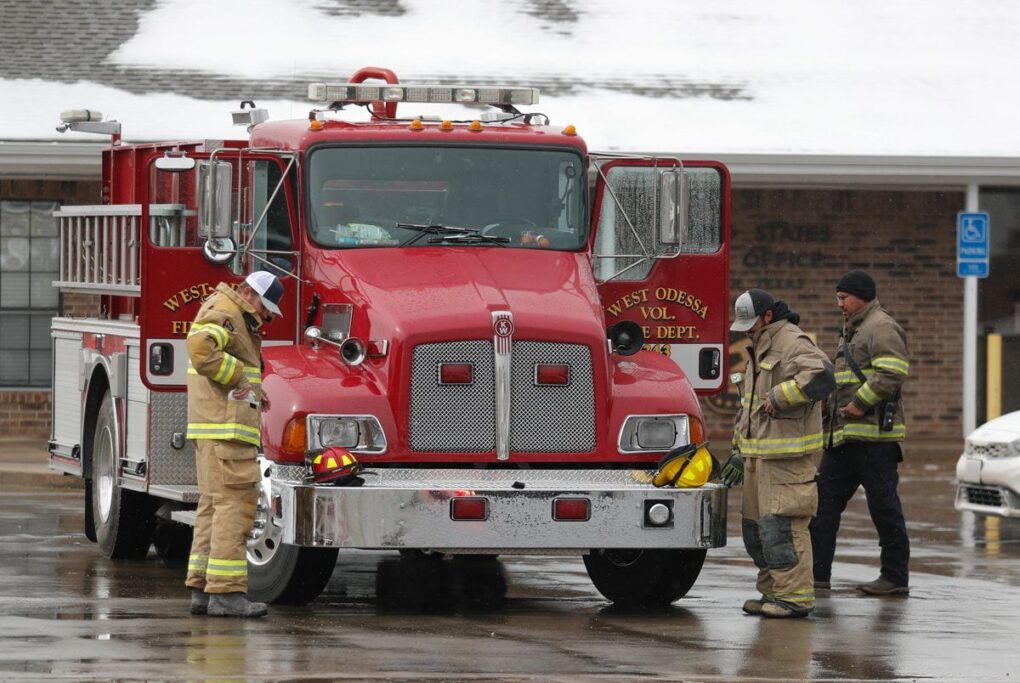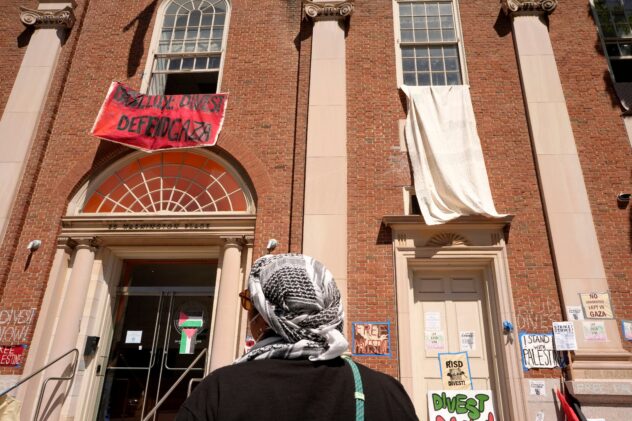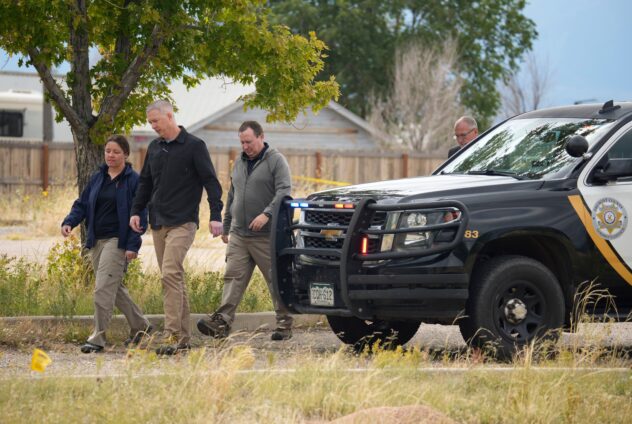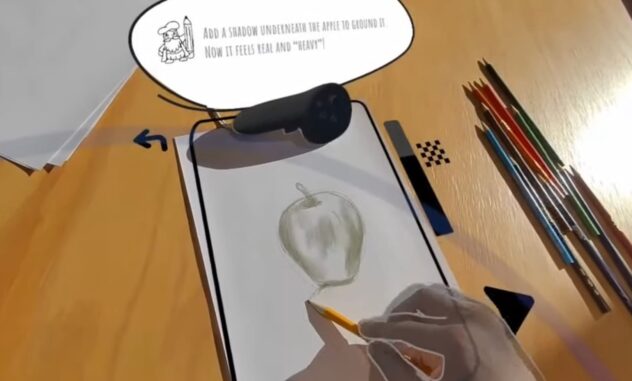
A series of wildfires in the Panhandle, which first broke out Monday afternoon, have engulfed more than 1 million acres of land — an area larger than the state of Rhode Island – making it the largest fire in Texas history.
At least two people have died, our firefighters were injured and many have been evacuated or ordered to seek shelter.
Authorities hoped cooler temperatures and snow on Thursday could help them contain the wildfires, but a few were still spreading through the region Thursday. The National Weather Service has also issued a fire weather watch for Saturday and Sunday for many parts of the Panhandle.
Gov. Greg Abbott on Wednesday issued a disaster declaration for 60 counties in the area, directing the Texas Division of Emergency Management to deploy more resources and firefighters to contain the blaze. Additional medical personnel are also on the ground to support firefighters and other emergency responders.
Here’s more about what alerts have been issued, wildfire safety, what we know about damages, and how you may be able to help affected Texans.
Wildfire weather alerts
The National Weather Service in Amarillo on Thursday issued a fire weather watch for the Texas and Oklahoma Panhandle from Saturday afternoon through Sunday evening, noting strong winds and low relative humidity in the area and cautioning people to listen for later forecasts.
The watch is in effect for the following counties in Texas:
- Dallam
- Sherman
- Hansford
- Ochiltree
- Lipscomb
- Hartley
- Moore
- Hutchinson
- Roberts
- Hemphill
- Oldham
- Potter
- Carson
- Gray
- Wheeler
- Deaf Smith
- Randall
- Armstrong
- Donley
- Collingsworth
- Palo Duro Canyon (State Park)
Weather forecasters issue a fire weather watch when potentially dangerous fire weather conditions are possible over the next 12 to 72 hours.
A fire weather warning or red flag is issued when dangerous fire weather conditions are either occurring or expected to occur within 24 hours. If the danger is imminent, local authorities may issue an evacuation notice to alert residents.
Wildfire safety tips
Smoke from wildfires alone can pose a serious health threat, especially for kids, older adults and those with chronic heart or lung disease and asthma.
Exposure to wildfire smoke can trigger asthma attacks, heart attacks and strokes. It can cause eye and respiratory irritation, coughing, wheezing and difficulty breathing.
Wildfires can also create a risk of carbon monoxide poisoning. Inhaling carbon monoxide can cause headaches, nausea, dizziness and, in high concentrations, premature death.
Texans can find information about local wildfires through their local fire departments or online using the Texas A&M Forest Service’s Incident Viewer.
What to do during a wildfire:
- Close all windows, vents, doors, and fireplace screens.
- Disconnect automatic garage door openers so doors can be opened by hand if you lose power
- Close and protect all of your home’s openings to prevent embers from penetrating your home
- Place valuable documents and family mementos inside the car for quick departure if necessary
- Connect garden hoses and fill any pools, hot tubs, garbage cans, tubs, or other large containers with water. Firefighters have been known to use the hoses to put out fires on rooftops.
- Evacuate immediately if authorities tell you to do so and leave the lights on in your home so that firefighters can see it through dense smoke
What to do after a wildfire
- Wait for officials to say it’s safe before returning home or using water
- Avoid ash, charred trees, smoldering debris, and live embers
- Avoid damaged or fallen power lines, poles, and downed wires
- Follow public health rules and wear safety equipment
- Protect your skin with long-sleeved clothing and wear goggles to protect your eyes
- Wear an N95 respirator and don’t breathe in ash
- Wash off ash that gets on your skin or in your eyes or mouth as soon as you can
- Document property damage with photographs and contact your insurance company
SOURCES: The Centers for Disease Control and Prevention,Environmental Protection Agency, Ready.gov (U.S. Department of Homeland Security), American Red Cross, National Weather Service, Coronado National Forest, USDA Forest Service, Texas General Land Office
Evacuations and damages
On Tuesday, local officials in the cities of Canadian, Fritch and Glazier ordered nearly 5,000 residents to evacuate or shelter in place. By Wednesday, the evacuation order in Hemphill County, where Canadian and Glazier are located, was lifted.
Local officials are still assessing the extent of the damage, but the fires destroyed approximately 40 homes near Canadian, according to early estimates by Hemphill County Emergency Management coordinator Bill Kendall.
Local officials are working to clear up roadblocks and set up donation centers, according to the Canadian Record, which has provided periodic updates on social media.
How to help those affected by wildfires
The Amarillo Area Foundation’s Panhandle Disaster Relief Fund, which supports local residents and organizations, is accepting donations online or by check.
The Texas Farm Bureau has established a fund to help farmers and ranchers affected by the Panhandle wildfires. Donations are being accepted online and by check. Agricultural producers can apply for assistance through this form.
The Texas A&M AgriLife Extension Service is establishing supply points in several locations in the region to accept donations of hay, feed and fencing supplies needed to support ranchers and producers affected by the wildfires. Here’s how to donate to specific areas. General questions about donations or relief efforts can be made at 806-354-5800, according to Texas A&M AgriLife Extension Service.
The Texas Panhandle Volunteer Organizations Active in Disaster (VOAD) is helping coordinate volunteering in the area. You can fill out their volunteer interest form here, email [email protected] or call 806-378-3004.
Here are more guides from news outlets with information on how to get involved:
- How to help: Ways to provide assistance after wildfires impact West Texas, Lubbock Avalanche-Journal
- How to support Texas wildfire victims from afar, KXAN
- High Plains communities, fire departments, agencies advise how to help first responders amid wildfires, MyHighPlains.com
- How to help the Texas Panhandle wildfire victims, Fox4
Disclosure: Texas A&M AgriLife, Texas A&M AgriLife Extension Service, Texas Farm Bureau and Texas General Land Office have been financial supporters of The Texas Tribune, a nonprofit, nonpartisan news organization that is funded in part by donations from members, foundations and corporate sponsors. Financial supporters play no role in the Tribune’s journalism. Find a complete list of them here.
















